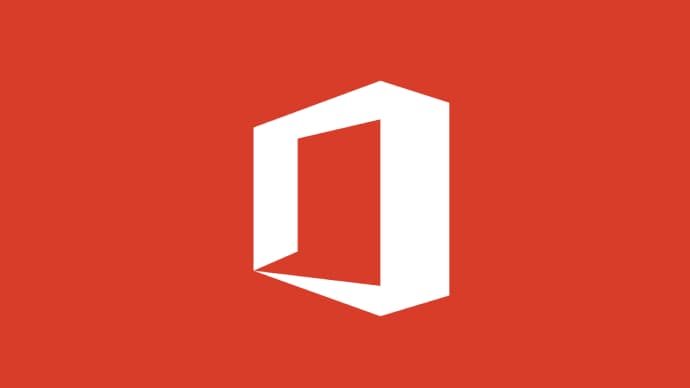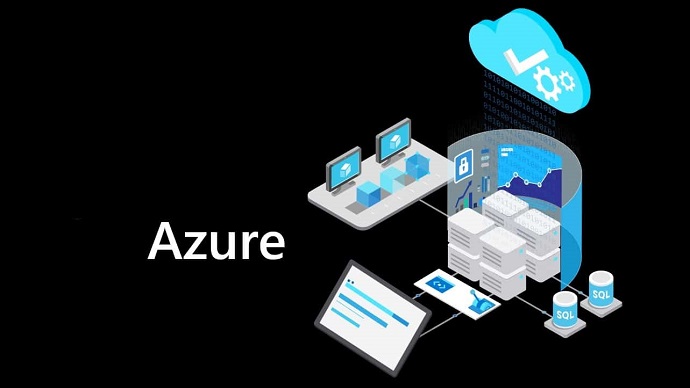Use VCE Exam Simulator to open VCE files

71201X Avaya Practice Test Questions and Exam Dumps
Question No 1:
Which entry in Avaya Aura System Manager (SMGR) defines the address of an Avaya Aura Session Manager (SM) Security Module?
A. SM SIP Entity Link
B. SM Instance
C. SM SIP Entity
D. SM Replica Node
Answer: C
Explanation:
In Avaya Aura System Manager (SMGR), the SM SIP Entity defines the address of an Avaya Aura Session Manager (SM) Security Module. Here’s a breakdown of the options:
A. SM SIP Entity Link:
The SM SIP Entity Link is used to define the connection between SIP Entities, which involves linking Session Manager entities to other entities. It does not specifically define the address of the Security Module.
B. SM Instance:
The SM Instance refers to a specific instance of the Session Manager or Security Module in the configuration. While it identifies a particular instance, it does not directly define the address of the Security Module.
C. SM SIP Entity:
The SM SIP Entity entry is where the address of the Security Module (or Session Manager) is defined. This is where the configuration of the SIP Entity for Session Manager and Security Modules takes place, making this the correct option.
D. SM Replica Node:
The SM Replica Node refers to additional replicas of the Session Manager or Security Module, which helps in ensuring high availability. However, it does not define the primary address of the Security Module.
Thus, the correct answer is C, as it is directly responsible for defining the address of the Avaya Aura Session Manager Security Module in Avaya Aura System Manager.
Question No 2:
Which command, when entered from the Avaya Aura Session Manager (SM) command line, can be used to initiate the trusted relationship between Avaya Aura System Manager (SMGR) and SM?
A. service trust start
B. initDRS
C. start trust management
D. initTM
Correct Answer: D
Explanation:
In an Avaya Aura environment, establishing a trusted relationship between Avaya Aura System Manager (SMGR) and Session Manager (SM) is essential for secure and reliable communication and configuration management. This trusted relationship is often established to ensure that system data is synchronized and that the session manager can communicate securely with the System Manager for management and configuration purposes.
Let’s break down each option:
The command service trust start is not the correct option for initiating a trusted relationship between SMGR and SM. This command might be used in other contexts related to services but does not specifically initiate the trust relationship between Avaya Aura System Manager and Session Manager. Therefore, this is not the correct answer.
initDRS is related to the Data Replication Service (DRS) initialization, which is important for setting up the replication of configuration data between different Avaya systems. While important in some configurations, this command is not used to initiate the trust relationship between SMGR and SM. This command is unrelated to establishing the trust relationship in question, so it’s not the right choice here.
The command start trust management sounds like it could be related to starting a trust process, but it is not the correct syntax for initiating the trusted relationship between Avaya Aura System Manager and Session Manager. This is a plausible-sounding option but is not the command used in practice for this purpose.
initTM is the correct command used to initiate the trusted relationship between Avaya Aura Session Manager (SM) and Avaya Aura System Manager (SMGR). The initTM command is specifically designed for this purpose. It configures the trust between SMGR and SM, allowing the two systems to securely communicate and share configuration information. This is the command that should be entered from the Session Manager command line to establish this relationship.
The correct command for initiating the trusted relationship between Avaya Aura System Manager and Session Manager is initTM. This command ensures secure communication and integration between the two components in the Avaya Aura system.
Question No 3:
When adding a new Avaya Aura Session Manager (SM), where are its Listen Ports defined?
A. Communication Profile
B. SM Firewall
C. Session Manager SIP Entity
D. SM Administration
Answer: D
In Avaya Aura Session Manager, Listen Ports are defined and configured through the SM Administration interface. This is where you can manage the ports that the Session Manager will listen to for SIP traffic. These ports are critical for enabling proper communication between the Session Manager and other network elements. The configuration of these ports is usually done within the administrative interface, under the appropriate settings for the Session Manager instance.
A. Communication Profile
The Communication Profile is used to define the user and endpoint information and does not directly deal with the configuration of Listen Ports. It's more about managing communication settings for end devices and users, not the Session Manager’s network ports.
B. SM Firewall
The SM Firewall refers to settings related to network security and traffic filtering but does not define the Listen Ports themselves. Firewalls are used to manage network access control but not the specific configuration of ports for listening.
C. Session Manager SIP Entity
While the Session Manager SIP Entity configuration is important for defining how the Session Manager interacts with SIP devices, it doesn’t specifically include the configuration of Listen Ports. SIP Entities handle logical representation and routing, not the direct port assignment.
Listen Ports for the Avaya Aura Session Manager are defined in the SM Administration interface, which is where you configure network ports for SIP communication. This allows the Session Manager to properly handle and route SIP traffic for communication.
Question No 4:
Which two does an Avaya Aura Session Manager (SM) store in its registrar database during registration? (Choose two.)
A. Location (IP Address)
B. User Language preference
C. SIP Uniform Resource Identifier (URI)
D. SIP endpoint type
E. User Time Zone
Answer: C, D
Explanation:
When a device, such as a SIP phone, registers with an Avaya Aura Session Manager (SM), it stores certain key information in the registrar database. The Session Manager manages SIP communications, handling tasks like routing and registration. Let's break down each option to understand what is typically stored during the registration process:
A. Location (IP Address)
While the IP address may be relevant for session management and routing, it is not directly stored in the registrar database during the SIP registration process. Instead, IP address-related information is often used in other components like the SIP proxy or routing configuration, rather than being stored explicitly in the Session Manager’s registrar database.
B. User Language preference
The user language preference is not typically stored in the registrar database. The registrar database focuses more on information that facilitates call routing and session management, rather than user-specific settings like language preferences. Language settings may be managed at the endpoint level but are not central to the Session Manager’s registration process.
C. SIP Uniform Resource Identifier (URI)
The SIP URI, which uniquely identifies a user or device (e.g., sip:user@example.com), is a fundamental part of the registration process. The Session Manager stores this URI in its registrar database to track which devices or users are registered. This identifier is crucial for routing SIP messages to the correct user or device.
D. SIP endpoint type
The SIP endpoint type is stored in the registrar database. This information is essential because it helps the Session Manager determine how to handle different types of devices or users (e.g., a hard phone, soft client, etc.) during the registration process. The type of endpoint can influence how calls are routed, the features available, and the overall behavior of the communication session.
E. User Time Zone
The user’s time zone is generally not stored in the registrar database. While time zone information might be relevant for features such as call forwarding or scheduling, it is typically handled at a different layer of the system, such as in the user profile or endpoint configuration, rather than in the Session Manager’s registration database.
In summary, the two correct answers, C and D, represent the key pieces of information that are stored in the Avaya Aura Session Manager’s registrar database during the registration process: the SIP URI and the SIP endpoint type. These are necessary for managing SIP sessions and routing communication effectively within the system.
Question No 5:
After deploying a new Avaya Aura Session Manager (SM), what is its initial Service State?
A Accept New Service
B Deny All Service
C Service Mode
D Maintenance Mode
Correct Answer: D
Explanation:
When a new Avaya Aura Session Manager (SM) is deployed, its initial Service State is set to Maintenance Mode. This state is intended for configuration, testing, and troubleshooting purposes, ensuring that the system does not process live traffic or accept service requests until it is fully configured and ready for production use. Maintenance Mode allows administrators to perform necessary configurations and verify system functionality without affecting service delivery.
Here’s an analysis of the options:
A. Accept New Service: This state allows the Session Manager to begin accepting and processing service requests from devices and other network components. However, this is not the initial state after deployment. The system must first be configured and tested, so it does not start accepting new services immediately upon deployment.
B. Deny All Service: While it may sound like a reasonable state for an initial setup to avoid unnecessary processing, this state is not the default for a newly deployed Session Manager. Maintenance Mode is the state used for the initial configuration and setup phase, during which service requests are not processed.
C. Service Mode: This state is an operational mode where the Session Manager is actively handling service requests and performing its normal duties. However, this is not the initial state right after deployment, as the system will first be placed in Maintenance Mode for configuration and testing before moving to full service mode.
D. Maintenance Mode: This is the correct answer. After deployment, the initial service state of the Avaya Aura Session Manager is Maintenance Mode. In this state, administrators can perform necessary configuration and testing activities. The system does not handle live traffic, and service acceptance is disabled to prevent any service-related issues during the initial setup phase.
In conclusion, D is the correct answer, as Maintenance Mode is the default initial service state for an Avaya Aura Session Manager following its deployment, allowing administrators to perform configuration tasks safely before the system enters full operational mode.
Question No 6:
What are two functions of Avaya Aura Session Manager (SM)? (Choose two.)
A. It acts as an H.323 call controller.
B. It provides a point of registration for SIP endpoints.
C. It acts as a centralized SIP routing and integration tool.
D. It acts as an H.323 routing engine.
E. It registers digital (DCP).
Correct Answer: B, C
Explanation:
Avaya Aura Session Manager (SM) is a key component in Avaya's unified communications solution, primarily focused on managing and routing SIP-based communications. It facilitates the integration of various communication protocols and provides centralized control over session management. Let’s break down the options and explain the correct answer.
This statement is incorrect. While H.323 is an older protocol for voice and video communications, Avaya Aura Session Manager (SM) is primarily focused on managing SIP (Session Initiation Protocol) sessions, not H.323. H.323 functionality is typically handled by different components, such as the Avaya Aura Communication Manager. Therefore, Option A is not a correct function of Session Manager.
This statement is correct. Avaya Aura Session Manager (SM) acts as a central point for registering SIP endpoints (such as SIP phones, soft clients, and other SIP-based devices). It manages the SIP signaling for these endpoints and ensures that calls can be established between them by routing and handling their registrations. This is a core function of Session Manager, as it allows devices to connect to the Avaya system. Hence, Option B is correct.
This statement is correct. One of the primary functions of Avaya Aura Session Manager is to provide centralized SIP routing. It allows for the integration of various SIP-enabled devices and systems within an organization. Session Manager centralizes the control of SIP session routing, ensuring that calls and messages are directed to the appropriate endpoints or services. It serves as the backbone for managing SIP traffic and connecting different systems that use SIP, such as VoIP phones and third-party communication platforms. Therefore, Option C is correct.
This statement is incorrect. As mentioned earlier, Avaya Aura Session Manager focuses on SIP-based communications and does not handle H.323 routing. The routing and management of H.323 calls are typically handled by other components in the Avaya ecosystem, such as Communication Manager or Gateways. Hence, Option D is incorrect.
This statement is incorrect. Digital Communication Protocol (DCP) devices are typically registered with Avaya Communication Manager, not Session Manager. Session Manager is focused on SIP endpoints and does not handle registration of DCP devices. Therefore, Option E is incorrect.
The two correct functions of Avaya Aura Session Manager (SM) are Option B (providing a point of registration for SIP endpoints) and Option C (acting as a centralized SIP routing and integration tool).
Question No 7:
Which feature of Avaya Aura Session Manager (SM) makes it possible to communicate with non-Avaya Aura Third-Party Call Servers such as a CS1000?
A. Adaptation Module
B. CS1000 Convertor
C. Regular Expression
D. CS1000 Switcher
Answer: A
Explanation:
Avaya Aura Session Manager (SM) is designed to provide centralized call control and interoperability among various communication systems, including third-party systems like the Nortel CS1000 (now part of Avaya). One of the key features that enables communication with these non-Avaya systems is the Adaptation Module.
A. Adaptation Module:
The Adaptation Module is a feature of the Avaya Aura Session Manager that allows for the integration of non-Avaya systems, such as the CS1000, into the Avaya Aura ecosystem. This module enables the translation and normalization of signaling and media streams between different systems, which is critical for interoperability. It provides the necessary adaptations to ensure that the non-Avaya systems can communicate with the Avaya platform.
B. CS1000 Convertor:
There is no specific "CS1000 Convertor" in Avaya Session Manager terminology. While there might be other tools or processes for converting protocols or signaling between different systems, this is not the correct answer for how Avaya Session Manager communicates with the CS1000.
C. Regular Expression:
Regular expressions are used in some cases for pattern matching, especially in routing and call processing scenarios. However, regular expressions are not a specific feature used to integrate non-Avaya systems like CS1000. They are more of a general tool used for matching patterns in data.
D. CS1000 Switcher:
This option is not a recognized feature of Avaya Session Manager. While the CS1000 may have its own mechanisms for handling calls and switching, the integration with Avaya Session Manager is not typically done via a "Switcher" but through an Adaptation Module.
Thus, the correct answer is A, as the Adaptation Module is the feature responsible for enabling communication between Avaya Aura Session Manager and third-party call servers like the CS1000.
Question No 8:
Which statement describes the role of Serviceability Agents?
A. It can be used to automatically upgrade Avaya Aura Session Manager (SM) to the latest software release.
B. It enables simultaneous Avaya Aura System Manager (SMGR) and Avaya Aura Session Manager (SM) Backups.
C. It allows the administration of SIP Call Center agents.
D. It enables alarms to be sent to Avaya Aura System Manager (SMGR).
Answer: D
Explanation:
Serviceability Agents are an essential component in the Avaya Aura environment. Their primary role is related to monitoring, diagnostics, and alerting, making sure the system's health and performance are well-managed. Let's analyze the options in the context of Serviceability Agents:
A. It can be used to automatically upgrade Avaya Aura Session Manager (SM) to the latest software release:
While Serviceability Agents can monitor the system's health and manage diagnostics, they do not handle software upgrades automatically. Upgrades are typically handled by system administrators or other specialized tools, but not directly by Serviceability Agents.
B. It enables simultaneous Avaya Aura System Manager (SMGR) and Avaya Aura Session Manager (SM) Backups:
Serviceability Agents are not directly responsible for backing up the systems. Backups of the Avaya Aura System Manager (SMGR) and Session Manager (SM) are typically managed through system maintenance tools, not via Serviceability Agents.
C. It allows the administration of SIP Call Center agents:
Serviceability Agents are not specifically focused on the administration of SIP Call Center agents. Their role is more centered on system monitoring, diagnostics, and reporting issues, rather than managing specific application-level components such as call center agents.
D. It enables alarms to be sent to Avaya Aura System Manager (SMGR):
This is the correct statement. Serviceability Agents in the Avaya Aura environment play a key role in system monitoring. They can collect data on system performance and send alarms to the Avaya Aura System Manager (SMGR) when issues are detected. These alarms help in proactive troubleshooting and management of the system, ensuring better serviceability and uptime.
The role of Serviceability Agents is to ensure the system's health through monitoring and diagnostics, and to send alarms to Avaya Aura System Manager (SMGR) when needed. Therefore, the correct answer is D.
Question No 9:
Which three methods of Avaya Aura Session Manager (SM) assignments to Users are possible from Avaya Aura release 10.1? (Choose three.)
A. Location-Region
B. Fixed
C. Domain-Assigned
D. Auto-Selected
E. Fixed-Region
Answer: B, D, E
Explanation:
In Avaya Aura Session Manager (SM) release 10.1, several methods are available to assign users to the Session Manager for call routing and communication services. These methods control how users are allocated to Session Manager for their call processing. Let’s break down the options:
A. Location-Region: This method typically refers to assigning users based on their geographic location or the region they belong to. However, in the context of Session Manager 10.1, this is not a primary assignment method listed in the official documentation. This term may refer to a general concept, but it is not specifically listed as a supported assignment method.
B. Fixed: This method refers to manually configuring a fixed, predetermined assignment for users. This means that a specific Session Manager is assigned to a user, and this assignment is static. This is a valid method for assigning users in Avaya Aura Session Manager 10.1.
C. Domain-Assigned: This method involves associating users with a specific domain, and it is commonly used to manage user assignments across different domains. However, this is not typically one of the specific methods available for user assignment directly in Session Manager. It is more related to domain management rather than user assignment.
D. Auto-Selected: The Auto-Selected method allows Session Manager to automatically select an appropriate Session Manager based on pre-configured rules or availability. This method dynamically selects the best Session Manager for the user, based on the system’s real-time state. This is a valid assignment method in Session Manager 10.1.
E. Fixed-Region: This method is a combination of the Fixed method and region-specific assignments. It involves assigning a user to a fixed Session Manager that is linked to a specific region. This is a valid method for assigning users in Session Manager 10.1 and provides better control over user and region-based routing.
Thus, the three valid methods for user assignments in Avaya Aura Session Manager 10.1 are B. Fixed, D. Auto-Selected, and E. Fixed-Region.
Therefore, the correct answer is B, D, E.
Question No 10:
Under which circumstance might an Avaya Aura Session Manager (SM) alarm be automatically cleared?
A. after 24 hours of the alarm’s first report of occurrence
B. when the alarm condition has been resolved
C. if an automatic alarm clearing rule has been specified
D. during the automatic nightly Avaya Aura System Manager (SMGR) alarm clearing
Answer: B
Explanation:
Avaya Aura Session Manager (SM) is part of the Avaya communication suite, and it is designed to manage session control and communication routing within an enterprise. The system has built-in alarm management features to alert administrators about issues that could affect the performance or functionality of the communication infrastructure.
Alarms are generated when certain conditions or issues are detected, such as connectivity problems or system failures. However, these alarms need to be cleared once the underlying issue is resolved, to ensure that the monitoring system reflects the current state accurately.
Option A suggests that alarms will be automatically cleared after 24 hours of the alarm's first report of occurrence. This is not typically the case for most enterprise systems, as alarms are cleared based on the resolution of the underlying issue rather than a fixed time period.
Option B (the correct answer) states that alarms are cleared when the alarm condition has been resolved. This is the standard behavior in most systems. Once the issue that triggered the alarm is resolved, the alarm is automatically cleared, ensuring that the system remains in sync with the actual state of the network or service.
Option C mentions that alarms might be cleared if an automatic alarm clearing rule has been specified. While it is true that customized rules for alarm clearing can be configured, this is not the default or automatic behavior unless specifically set by the administrator.
Option D refers to automatic nightly alarm clearing in Avaya Aura System Manager (SMGR). While periodic maintenance tasks like nightly operations might clear certain temporary alarms, the clearing of alarms is primarily driven by the resolution of the issue that caused the alarm, rather than an arbitrary time-based clearing rule.
Thus, the correct answer is B (when the alarm condition has been resolved), as this reflects the standard protocol for clearing alarms in Avaya Aura Session Manager systems.

Top Training Courses











SPECIAL OFFER: GET 10% OFF
This is ONE TIME OFFER

A confirmation link will be sent to this email address to verify your login. *We value your privacy. We will not rent or sell your email address.
Download Free Demo of VCE Exam Simulator
Experience Avanset VCE Exam Simulator for yourself.
Simply submit your e-mail address below to get started with our interactive software demo of your free trial.